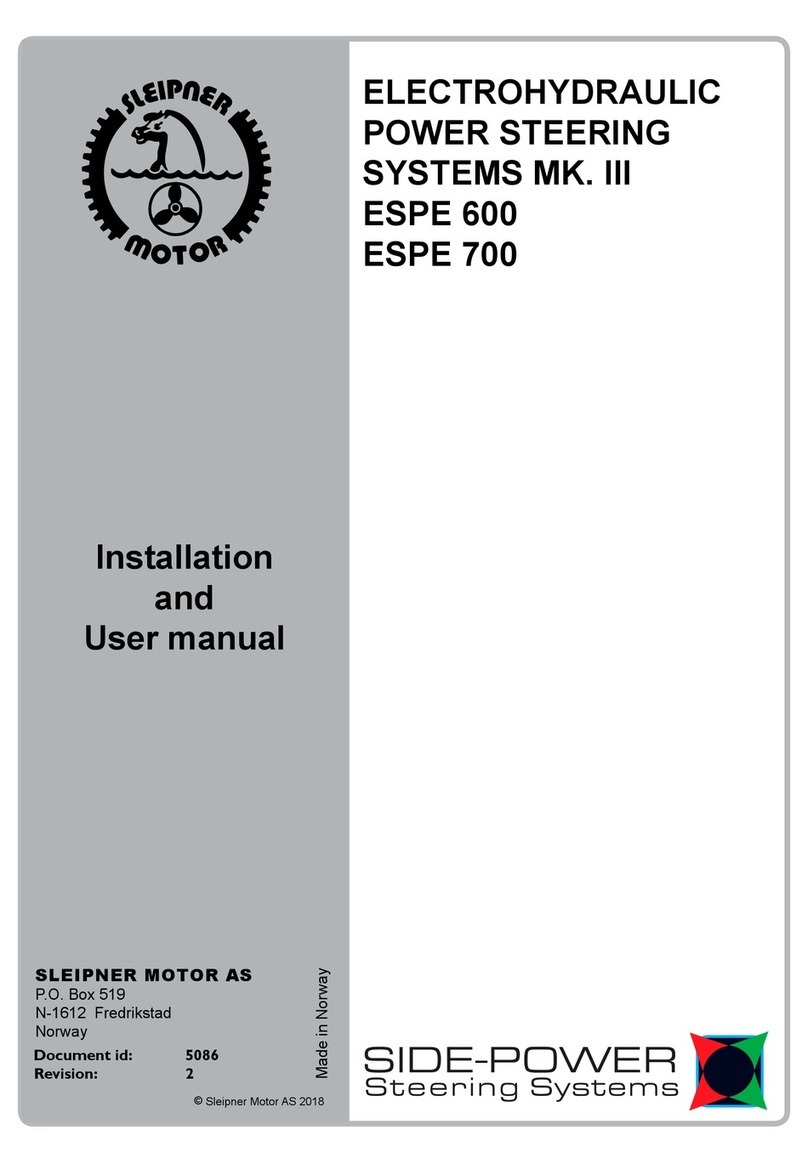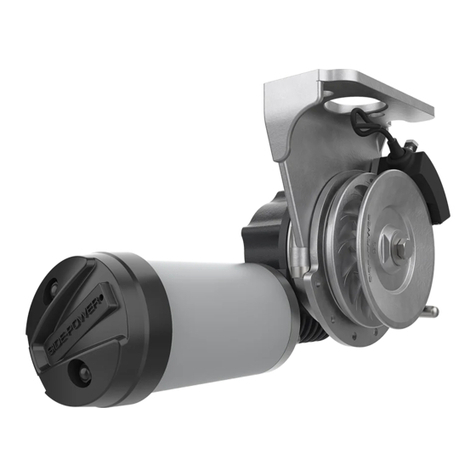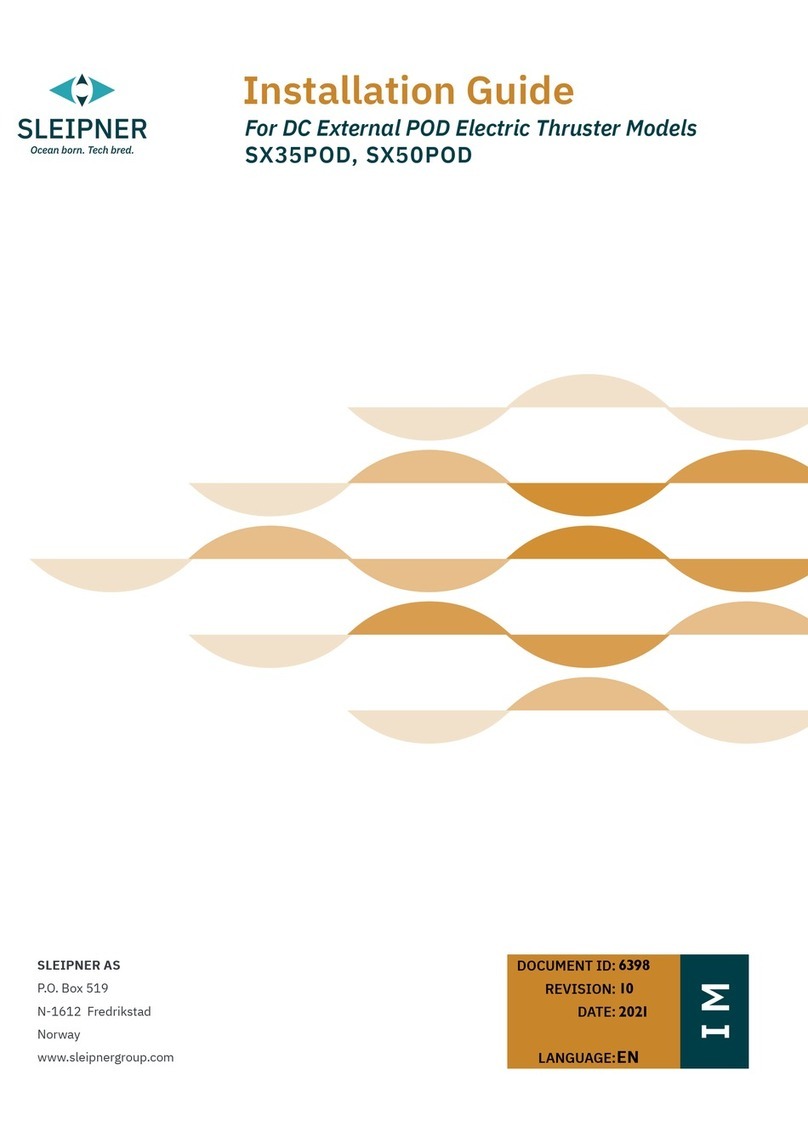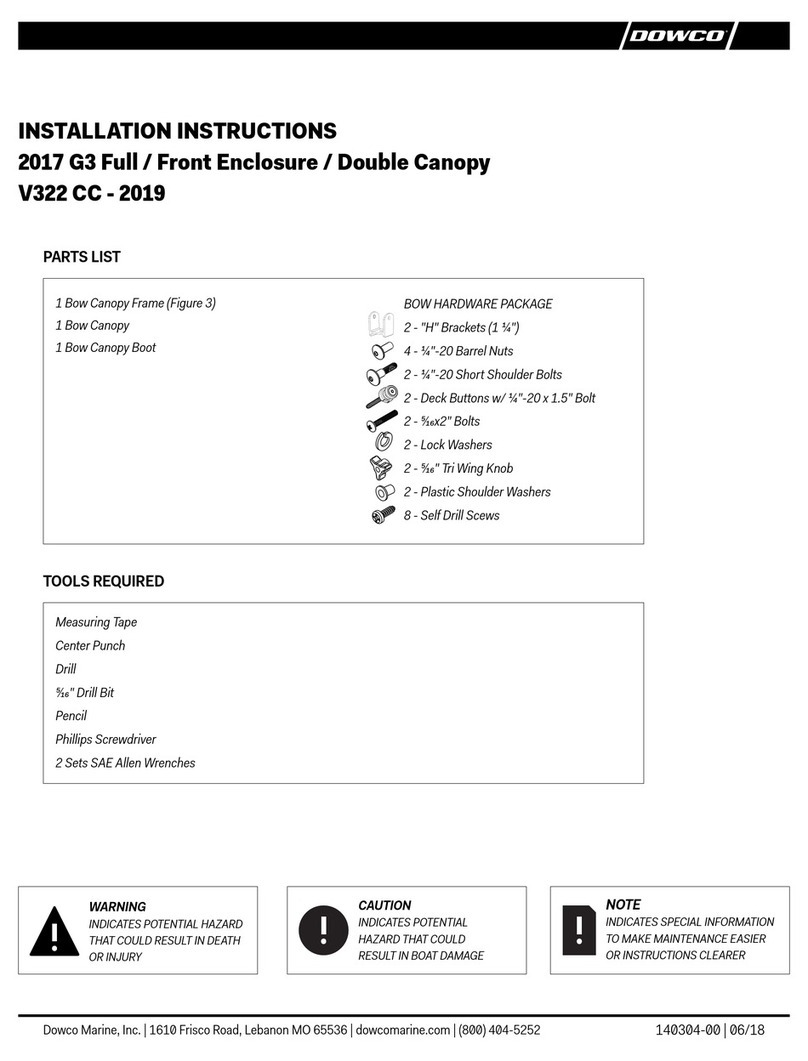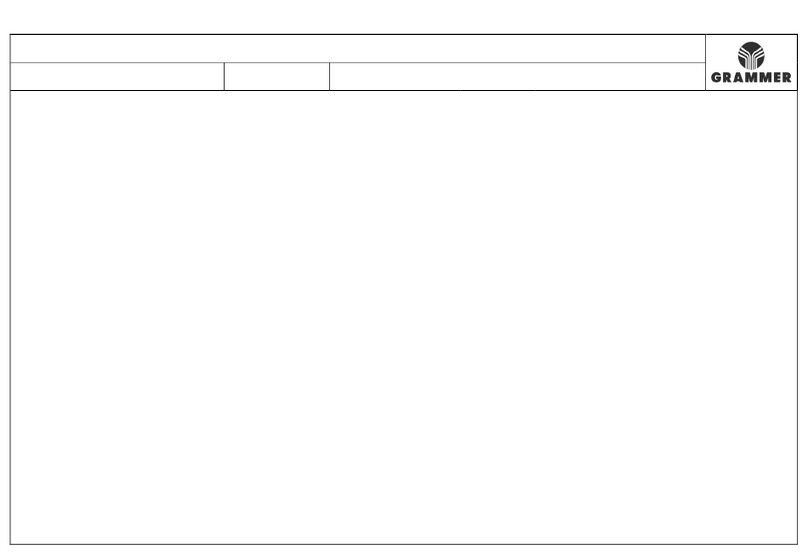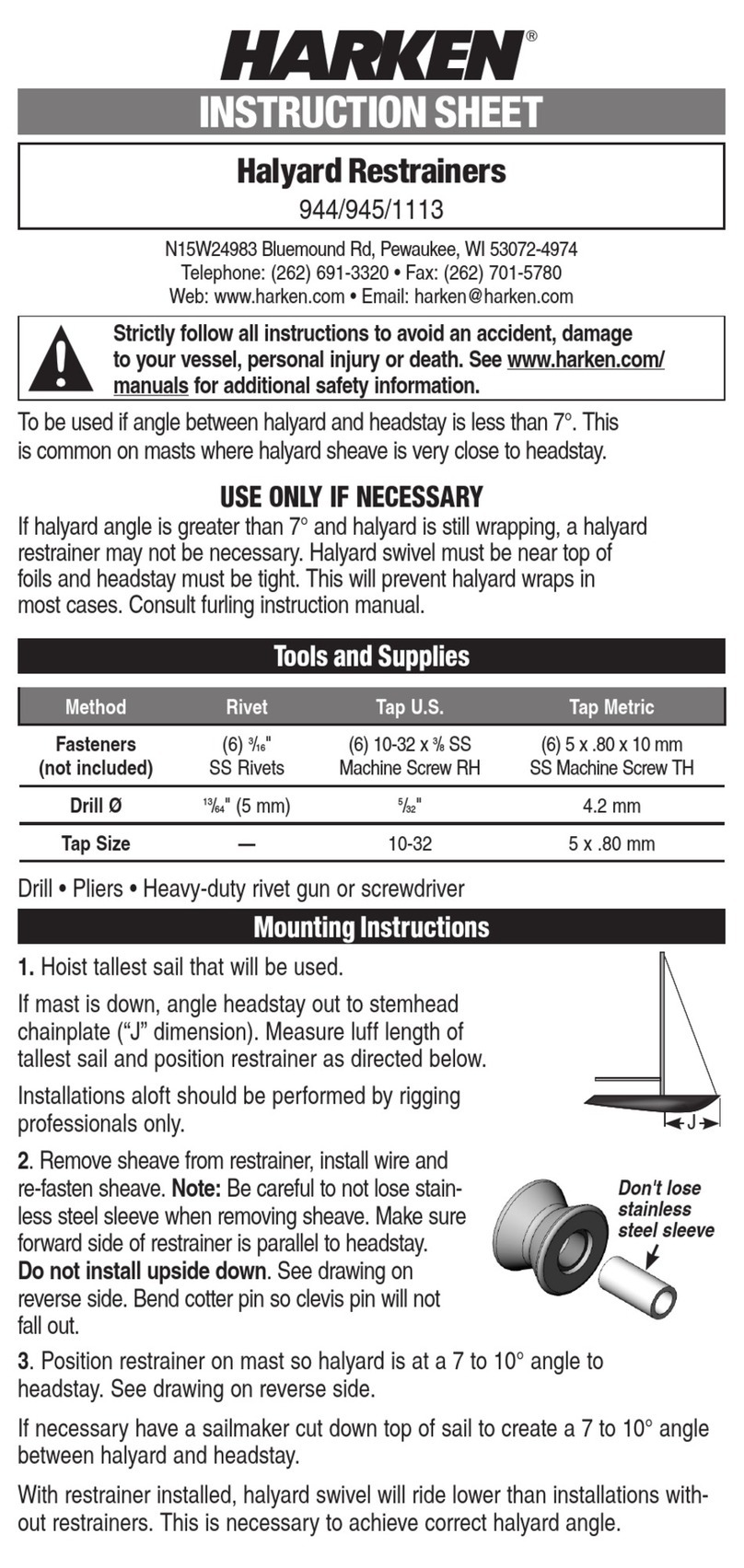
22 916 82022
-
MAXI 31 & 32 & 34 & 40 & 43 & 44
MC_0317
For MAXI windlass systems
Sleipner MAXI windlasses are a generic term for Sleipner windlass with 1000 or 1500 W, 12 or 24V. Some of the models are suitable for mounting
stern, some on the bow and some both stern and bow. Sleipner MAXI is intended for boats larger than approx. 25 feet. These windlasses are true
free-fall windlasses, it means that the anchor falls out and down to the bottom immediately after the switch to “drop anchor” (down) has been
pressed. It is the anchor’s weight on the outside of the anchor bracket that determines how quickly it falls out. It is therefore important to avoid
unnecessary friction between the ropes and hull, rolls or rope guides.
The installer must read this document to ensure necessary familiarity with the product before installation.
Instructions in this document cannot be guaranteed to comply with all international and national regulations. It is the responsibility of the
installer to follow all applicable international and national regulations when installing Sleipner products.
The recommendations given in this document are guidelines ONLY, and Sleipner strongly recommends that advice is obtained from a person
familiar with the particular vessel and applicable regulations.
This document contains general installation instructions intended to support experienced installers. If you are not skilled in this type of work,
please contact professional installers for assistance.
If required by local regulation, electrical work must be done by a licensed professional.
Appropriate health and safety procedures must be followed during installation.
Faulty installation of Sleipner products will render all warranties given by Sleipner Motor AS.
MC_0038
Responsibility of the Installer
MC_0440
General Installation Considerations and Precautions Guidelines
Sleipner Motor AS
P.O. Box 519, Arne Svendsensgt. 6-8
N-1612 Fredrikstad, Norway
MC_0020
Contents
Products
31-12110 - Maxi 31 windlass, 1000W, 12V
31-24115 - Maxi 31 windlass, 1500W, 24V
32-12110 - Maxi 32 windlass, 1000W, 12V
32-24115 - Maxi 32 windlass, 1500W, 24V
32-C-12110 - Maxi 32-C windlass, 1000W, 12V
32-C-12110V - Side-Power Engbo Maxi 32-C
32-C-24115 - Maxi 32-C windlass, 1500W, 24V
34-3G-12110 - Maxi 34-G windlass, 1000W, 12V, port side
34-3G-24115 - Maxi 34-G windlass, 1500W, 24V, port side
34-4G-12110 - Maxi 34-G windlass, 1000W, 12V, starboard
34-4G-24115 - Maxi 34-G windlass, 1500W, 24V, starboard
40-12110 - Maxi 40 windlass, 1000W, 12V
40-24115 - Maxi 40 windlass, 1500W, 24V
43-12110 - Maxi 43 windlass, 1000W 12V, port side
43-24115 - Maxi 43 windlass, 1500W 24V, port side
43-C-12110 - Sleipner windlass Maxi 43-C
43-C-24115 - Side-Power Engbo Maxi 43-C
44-12110 - Maxi 44 windlass, 1000W 12V, starboard
44-24115 - Maxi 44 windlass, 1500W 24V, starboard
Installation Manual
Responsibility of the Installer................................................................................................................................................................... 3
General Installation Considerations and Precautions Guidelines ........................................................................................................... 3
Windlass Measurements ................................................................................................................................................................. 4 - 6
Windlass Specications ........................................................................................................................................................................ 7
Installation Preparation .................................................................................................................................................................... 8 - 9
Anchor Brackets .................................................................................................................................................................................... 10
Windlass Installation MAXI 31.............................................................................................................................................................. 11
Windlass Installation MAXI 32............................................................................................................................................................... 12
Windlass Installation MAXI 32 Box........................................................................................................................................................ 13
Windlass Installation MAXI 34-G........................................................................................................................................................... 14
Windlass Installation MAXI 34-D ........................................................................................................................................................... 15
Windlass Installation MAXI 40............................................................................................................................................................... 16
Windlass Installation MAXI 43/44.......................................................................................................................................................... 17
Auto-stop Installation......................................................................................................................................................................18 - 19
Visual Wiring Diagram........................................................................................................................................................................... 20
Windlass Electrical Installation .......................................................................................................................................................21 - 22
Windlass Circuit Breaker ....................................................................................................................................................................... 23
Post-Installation Checklist ..................................................................................................................................................................... 24
Service and Support........................................................................................................................................................................... 25
Product Spare Parts and Additional Resources.............................................................................................................................. 25
Warranty Statement............................................................................................................................................................................ 25
